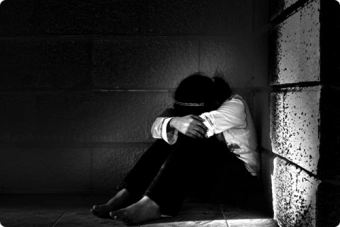What type of things do you typically judge and criticize yourself for – appearance, career, relationships, parenting – anything else ……………?
What language do you use with yourself when you notice a mistake or a flaw? Do you insult yourself, call yourself names? “How stupid I am” or “I never get things right” or “here I go again, typical.”

When you approach or run into challenges how do you respond? Do you get carried away by the drama or difficulty , making things bigger than they need to be?
Do you think everyone else is having a much better time that you are? Do you forget that everyone experiences difficulties, pain and suffering?
How does this make you feel? What are the consequences of being so hard on yourself?
Do you feel more motivated to change? Unlikely. Does it make you discouraged or depressed? Likely.
It seems that as human beings we are very good at this negative internal dialogue, however some of us do it much more than others.
Culturally we are not taught or expected to have self-compassion. We are taught to look for flaws in others, look for their shortcomings to feel better about ourselves. To reinforce our beliefs and to feel we are coping.
Compassion to others and ourselves is a major element of mindfulness. Being able to see the moment as it is, with awareness, openness and acceptance, encourages us to let go of judgments that keep us locked into viewing others and ourselves with dislike and intolerance.
Dr. Kristin Neff, the world leading researcher on self-compassion, writes that “self-compassion is an open-hearted way of relating to negative aspects of oneself and one’s experience that enables greater emotional resilience and psychological well-being” (The Encyclopedia of Positive Psychology Vol 2, p 864).
Neff has identified three essential components of self-compassion: Mindfulness – noticing instead of getting emotionally entangled; Self-kindness – treating yourself with care and understanding rather than beating yourself up with harsh criticisms; and Common humanity – realising that suffering is part of the human experience and that you are not alone and others suffer similarly.

Some people are naturally self-compassionate just as they are naturally compassionate to others. But compassion and self-compassion can be taught.
People participating in research studies have shown that by practising self-compassion they had higher levels of wellbeing and became more resilient. They were measurably happier, more capable, more curious and wiser in decision-making. They felt higher levels of social connectedness and felt greater satisfaction with life in general.
Partners rated those who practiced self-compassion as being more emotionally connected, accepting and less detached, controlling or aggressive.
Self-compassion has also been shown to decrease levels of depression and anxiety, reduce rumination, self-criticism as well as reduce a fear of failure.
It used to be thought that to make people feel better we needed to bolster their self-esteem. However, it is now known that self-esteem is often related to comparing oneself to others. We need to feel ‘better’ than others to feel good about ourself.
Self-esteem is contingent on success and it tends to falter in failure situations, making it difficult to access when we are faced with difficulties, challenges and failure. Whereas self-compassion is always accessible, and contrary to a commonly held belief, doesn’t lead to self-indulgence or self-pity.
In The Self-Compassion Diet, Jean Fain explores weight loss with a self compassionate focus. A Harvard Medical School Affiliated psychotherapist, Fain believes that more self-compassion, not self-discipline, is the answer to dieter’s prayers. She promotes mindfulness and self-compassion as a way to end the dieting merry-go-round and feel the power of self for successful weight-management.
Self-compassion is a powerful motivating force for growth and change. With self-compassion we can develop mastery of our goals, and reduce our fear of failure.
You may like to try an exercise in Self-compassion: Grab three pieces of paper. On the first piece write down the view of you from your closest. most compassionate friend. Keep writing. Write all the things they love about you, what they see, given all your flaws. The strengths they see in you. What they like about you. What you give back to them in your friendship.
On the second piece of paper write down all the things you criticise yourself about. What you hear yourself saying about you. Write down as much as you can, what it is, what you hear.
On the third piece of paper write down how you feel about that criticism you hear from yourself. What it is like to hear that about yourself.
Now, go back to your first piece of paper and imagine what that person would say if they heard those criticisms of you and saw how hurt you are. Write down what they would say. How they would explain those criticisms, how they would comfort you. What insights would they offer?
Neff suggests that when we experience warm and tender feelings toward ourselves we are altering our bodies as well as our minds. “Self-kindness allows us to feel safe as we respond to painful experiences, so that we are no longer operating from a place of fear – and once we let go of insecurity we can pursue our dreams with the confidence needed to actually achieve them” (p. 52, Self-Compassion: Stop beating yourself up and leave insecurity behind).
The Mindfulness Challenge this week is to practice self-compassion.
Notice your self-talk. Don’t take your thoughts personally, they are only thoughts, they will come and they will go.
Notice when you are getting hooked into self-criticism, even arguing with yourself – you will never win! Just notice it and move on with whatever you are doing at the time – whether that is ironing, driving the car, waiting for a meeting or even going to the bathroom.

Notice judgment. Are you judging others to feel better about yourself and confirm your beliefs about the world? Is this necessary – no!
Notice if you are being critical about not being Mindful. If you do that you will be being critical about yourself a lot!
Who you actually are is so much more than the narrative in your head. Be open to yourself, to this moment, and see the boundless strengths you and others have to offer.
Let go of comparison, let go of the fear of not being good enough, let go of perfectionism and accept the gifts of imperfection. Celebrate the challenge of being human and celebrate your own unique qualities – there is only one of you, don’t be afraid to share it around compassionately.







 Follow it without judgment on how it ‘should’ be, follow it without expectation of what you will feel later or at the time. Follow it as it brings new oxygen into your system, feeding your organs, your muscles, your brain. Follow it as it leaves your system and connects you to plants and the rest of the world.
Follow it without judgment on how it ‘should’ be, follow it without expectation of what you will feel later or at the time. Follow it as it brings new oxygen into your system, feeding your organs, your muscles, your brain. Follow it as it leaves your system and connects you to plants and the rest of the world.






 regular time each day, week or month, reflect on your life and list perhaps between three to five things you are grateful for. I always encourage people to look so much further than the immediate such as food and shelter, which of course we need to be grateful for. But to look beyond, looking for what has helped you this day live your life to its fullest. For example when we need to vote in Australia, I reflect on how grateful I am that I live in a country that encourages everyone to participate, including women, which doesn’t happen automatically in some countries in the world. Immediately I am grateful to live in my country and lining up, waiting to vote doesn’t seem so onerous.
regular time each day, week or month, reflect on your life and list perhaps between three to five things you are grateful for. I always encourage people to look so much further than the immediate such as food and shelter, which of course we need to be grateful for. But to look beyond, looking for what has helped you this day live your life to its fullest. For example when we need to vote in Australia, I reflect on how grateful I am that I live in a country that encourages everyone to participate, including women, which doesn’t happen automatically in some countries in the world. Immediately I am grateful to live in my country and lining up, waiting to vote doesn’t seem so onerous.






 opportunities and as a result becomes creative and excited by possiblities.
opportunities and as a result becomes creative and excited by possiblities. To walk into a meeting and listen with fresh ears? To watch your children eat, play and learn? To truly be with a long term friend or partner and hear them for who they are today, here and now?
To walk into a meeting and listen with fresh ears? To watch your children eat, play and learn? To truly be with a long term friend or partner and hear them for who they are today, here and now?